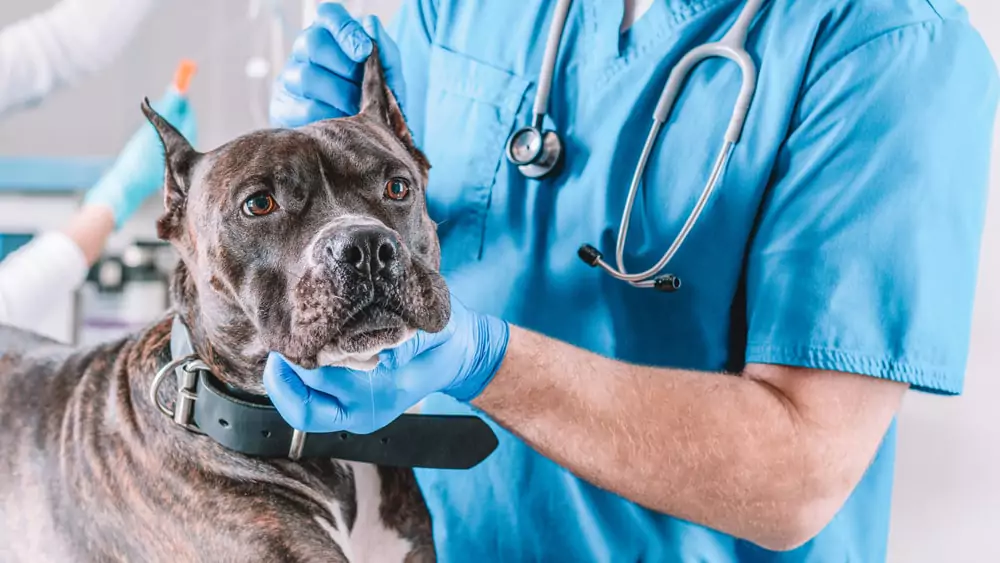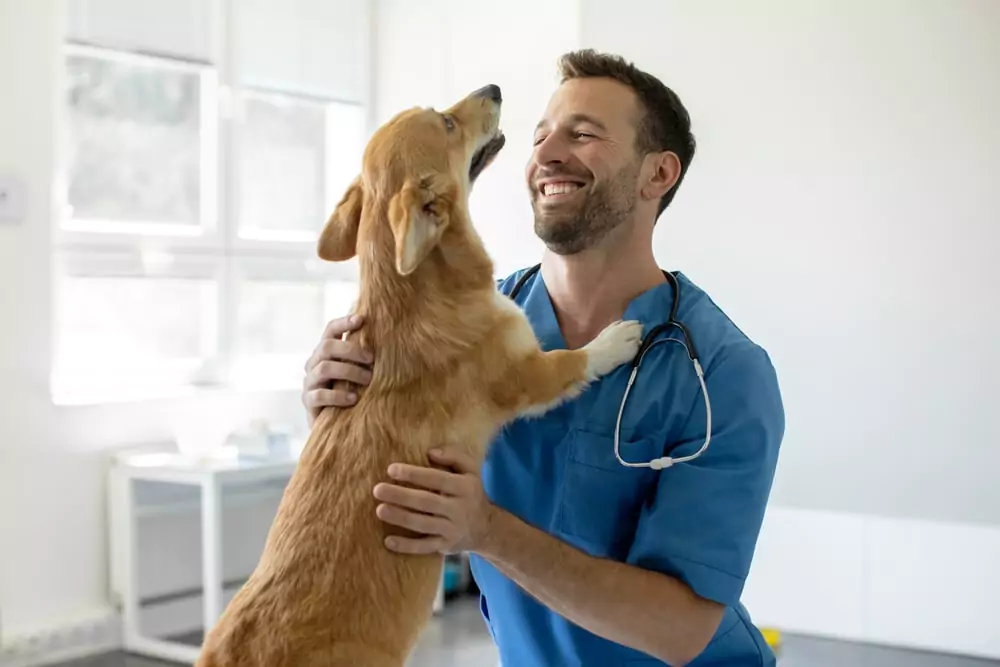PET HEALTH
One of the hardest parts of pet parenting is seeing our beloved animals suffer. It’s why we do everything we can to help keep them healthy with regular veterinary visits, preventive care, proper diet, exercise, and more.
However, an unexpected and costly pet emergency can befall even the healthiest dog or cat, no matter how hard we try to avoid it.
Knowing how to recognize and respond to a pet emergency could help you minimize your pet’s pain and suffering — or even save their life. Learn how to better prepare for these seven pet emergencies and their associated costs.
Pet Emergencies and Their Treatment Costs
The first step in recognizing a pet health emergency is knowing which warning signs and symptoms to watch out for. According to Dr. Ashley Gray, DVM, Medical Director of Veterinary Emergency Group (VEG) in Charlotte, these can include severe pain, weakness or collapse, choking, profuse vomiting and diarrhea, difficulty breathing, or an inability to defecate or urinate.1
These symptoms may be linked to any number of serious health conditions, so it’s a good idea to take them seriously. “Prompt care can be life-saving, and the more time that goes by [without treatment] the worse the disease or illness could get,” states Dr. Gray. Depending on the vet’s specific diagnosis, treatment and associated costs for what’s causing the emergency can vary.
A MetLife Pet Policy May Help Cover Emergency Care Costs
1. Difficulty breathing or rapid breathing rate
If you notice your pet either gasping for air or breathing faster than normal — especially if you can count more than 40 breaths per minute — Dr. Gray suggests bringing them to an emergency pet hospital right away.1
Dogs who are having trouble breathing often sit or stand with their legs wide and mouths open, sometimes refusing to lay down on their side.2 Some cats in respiratory distress may hide or sit quietly, while others may pant loudly with their mouths wide open. A blue or purple tongue may also indicate your pet is having trouble breathing.2
“Diseases that can cause these symptoms often are related to the heart and lungs, so things like heart failure and infection (like pneumonia) are just a few of the diseases veterinarians will be investigating,” Dr. Gray says.
Some of the costs associated with treating respiratory distress at the emergency vet can include:3,4
- Exam: $100 – $150
- X-rays: $150 – $250
- Ultrasound: $300 – $600
- Electrocardiogram/echocardiogram: $250 – $350
- Oxygen therapy: $500 – $3000
- Hospital stay: $600 – $3,500
2. Physical trauma
If your dog or cat has a serious accident, gets hit by a car, or is attacked, they could be suffering from broken bones, bleeding, internal injuries, and even shock. A trip to an emergency pet clinic can help get them the medical care they need quickly.
If there’s severe bleeding, apply direct pressure to their wounds to reduce blood loss and follow other first aid guidelines while transporting your pet to the vet.
Some of the costs associated with treating physical trauma at the emergency vet can include:3
- Exam: $100 – $150
- X-rays: $150 – $250
- Treat and repair wounds or broken bones: $800 – $2,500
- Emergency surgery: $1,500 – $5,000
- Hospital stay: $600 – $3,500
3. Bloated, swollen, or painful abdomen
There are many reasons a dog’s or cat’s abdomen may appear enlarged — such as bloat, heart disease, tumors, parasites, and other diseases.5,6 It’s a good idea to treat this symptom as an emergency, especially if your pet is in pain.
In dogs, a bloated belly could indicate they’re suffering from a life-threatening condition called gastric dilatation-volvulus (GDV). This painful condition happens when the stomach fills up with fluids or gas and gets rotated or twisted. GDV mainly affects older, large, deep-chested dog breeds and could require immediate medical intervention to save the animal.7
In cats, a swollen or painful abdomen could indicate feline infectious peritonitis (FIP), a potentially fatal viral disease that often goes undetected.6
Some of the costs associated with treating bloat or a swollen abdomen at the emergency vet can include:3,8
- Exam: $100 – $150
- Bloodwork: $80 – $200
- X-rays: $150 – $250
- Ultrasound: $300 – $600
- Emergency surgery: $1,500 – $5,000
- Complete treatment for GDV: $2,000 – $7,500+
4. Loss of balance, collapse, or unconsciousness
Loss of balance is a common symptom in a wide range of conditions, including cardiac, respiratory, neurological, and gastrointestinal disease, says Dr. Gray.1 Other causes could be an ear infection, brain tumor, stroke, seizure, or vestibular disease (commonly seen in older animals).9
Fainting, also called syncope, is equally distressing and more common in dogs than cats. Like imbalance, it may be caused by a variety of conditions, including loss of oxygen to the brain and heart disease.10
If your pet suddenly loses consciousness, it can be a good idea to bring them to a vet to determine the cause and whether your pet requires immediate treatment.
Some of the costs associated with treating balance or consciousness issues at the emergency vet can include:3,4,8
- Exam: $100 – $150
- Bloodwork: $80 – $200
- X-rays: $150 – $250
- Blood pressure measurement: $25 – $75
- Electrocardiogram/echocardiogram: $250 – $350
- MRI: $1,50011 – $5,00012
5. Ingestion of poison or a foreign object
Many things can be harmful to our pets if ingested. Despite our best efforts to prevent it, they may consume toxins like antifreeze, alcohol, chocolate, household cleaners, pest control sprays, poisonous plants, and more. Even non-toxic items could cause choking or obstruction hazards if your dog or cat swallows them.
In either case, timely action is crucial. If you know your dog or cat has eaten something bad, you may want to take them to an emergency vet and, if possible, bring the item or substance with you. If you’re unsure, you can call your vet first or contact a pet poison resource, like the ASPCA’s Animal Poison Control Center or the Pet Poison Helpline. Be aware that you may be charged for calling these help lines.
If your pet is experiencing any signs of sickness, pain, or distress, an emergency vet clinic can help evaluate and treat them.
Some of the costs associated with treating poisoning or foreign objects at the emergency vet can include:3,8
- Exam: $100 – $150
- X-rays: $150 – $250
- Poisoning: $250 – $6,000+
- Emergency surgery: $1,500 – $5,000
6. Severe and prolonged vomiting or diarrhea
Diarrhea and vomiting can be fairly common in pets and could be caused by things like switching pet food, viruses, parasites, or ingesting foreign objects/toxic substances.
Some cases of diarrhea or vomiting in pets may resolve quickly with rest and a bland diet. But if the diarrhea is severe or doesn’t improve within 48 – 72 hours, Dr. Gray says it’s best to take your pet for emergency veterinary care to avoid dehydration and figure out what’s causing the issue.1 “Some causes can require surgery (in the case of foreign body ingestion) or hospitalization,” she adds.
Some of the costs associated with treating severe vomiting or diarrhea at the emergency vet can include:3,8
- Exam: $100 – $150
- IV fluids and catheter: $120 – $170
- Gastroenteritis treatment: $750 – $3,000+
- Pancreatitis treatment: $2,000 – $5,000+
- Overnight hospitalization: $600 – $1,700
Pet Emergencies Can Be Scary. Vet Bills Don’t Have To Be.
7. Inability to urinate or defecate
If your pet is straining to pee or poop, but nothing is coming out, it could be a sign of a serious health emergency. “Straining to urinate can be due to a blockage, which can be life-threatening,” says Dr. Gray.
Dogs and cats may experience bouts of constipation from time to time. However, prolonged periods of inability to defecate could indicate an intestinal blockage or other serious problems. If pets go longer than 48 – 72 hours without defecating, especially if accompanied by yelping, whining, or meowing/howling, it could be time to head to the emergency clinic.13
Some of the costs associated with treating urination or defecation problems at the emergency vet can include:3,8
- Exam: $100 – $150
- X-rays: $150 – $250
- Urinalysis: $40 – $70
- Ultrasound: $300 – $600
- Treatment for urinary tract obstruction: $1,500 – $3,000+
- Emergency surgery: $1,500 – $5,000
- Overnight hospitalization: $600 – $1,700
Pet Emergency or Not?
In most cases, identifying a pet emergency is fairly clear. For example, if your pet is involved in an accident that results in broken bones or excessive bleeding, it can be a good idea to head toward your nearest emergency veterinary clinic.
However, there are plenty of pet health issues that may be harder to classify as emergencies. This is especially true if symptoms aren’t too severe and could be associated with a wide range of non-emergency issues — like an upset stomach.
This is when a call to your vet or an emergency clinic can be helpful. You can explain the situation and get their expert advice as to what to do next. Plus, if you have a MetLife Pet policy, you may have access to a 24/7 telehealth vet chat, where you can ask a vet questions about your pet’s health and get answers quickly.14
Tips for Managing Pet Emergencies
One of the best ways to manage any pet emergency is to be prepared, so your furry friend gets the treatment they need as quickly as possible. Here are some helpful tips:
- Identify the nearest 24/7 animal hospital or emergency clinic, and save their information. “Emergency vet hospitals are available for walk-ins at any hour,” says Dr. Gray. If you’re traveling with pets, research emergency hospitals in the area ahead of time.
- Keep a list of medications your pet is taking, along with the dosage information, so you can readily provide it to the emergency staff.
- Be sure to give your family veterinarian’s name and practice phone number to the emergency clinic staff, so they can communicate about the next steps.
- Have a pet emergency first-aid kit that also includes a copy of your pets’ medical records.
Prepare for Pet Emergencies With MetLife Pet Insurance
Pet emergency vet costs vary based on your location, your pet’s breed, age, and species, as well as their condition. The above costs are what you might pay at an emergency clinic, but depending on the urgency of the situation and the time of day, you may be able to get your pet treated at their own vet.
“Emergency veterinary care can be expensive, especially without pet insurance,” Dr. Gray says. To help you offset the cost of emergency pet care, she recommends investing in a pet insurance policy early on.1 A MetLife Pet policy can help ease this burden by reimbursing you up to 90% on covered expenses, so you can provide the right care for your pet — not just the most affordable option.15
Get your free quote today to find out how a dog insurance or cat insurance policy from award-winning16 MetLife Pet can help in the event of an emergency.
We can help handle the vet bill. You handle the belly rubs.



